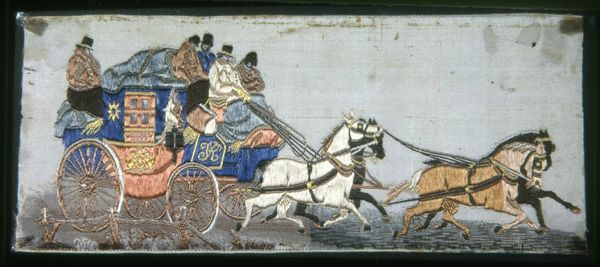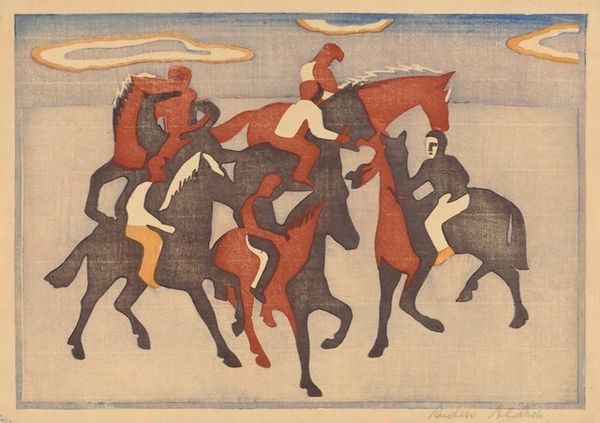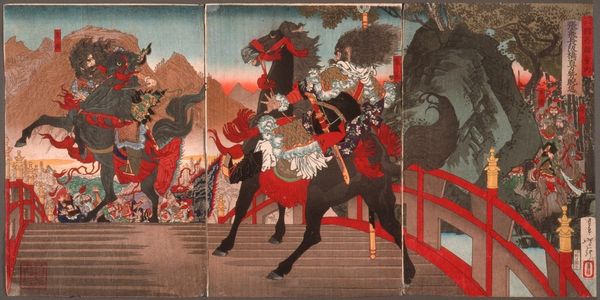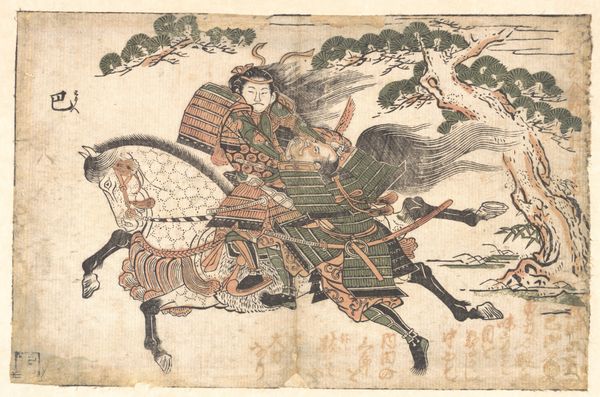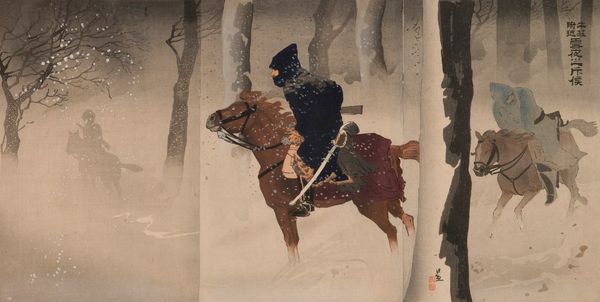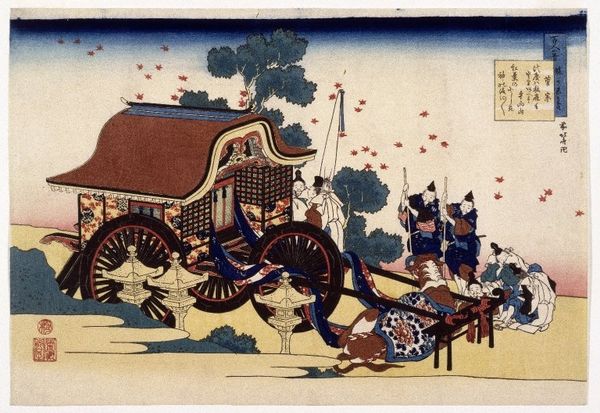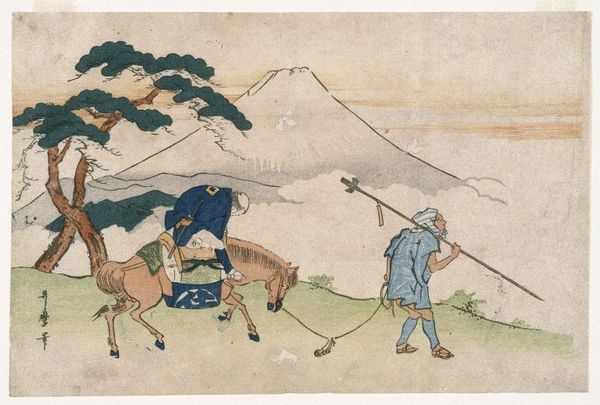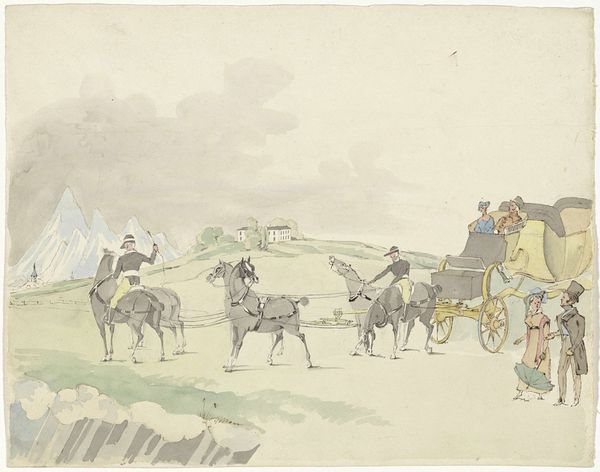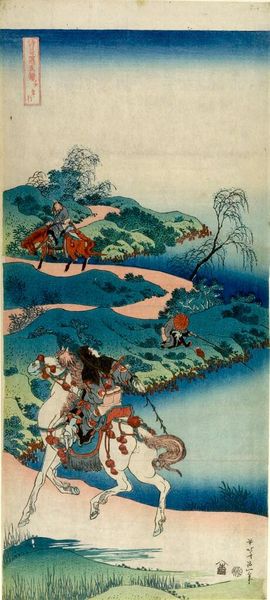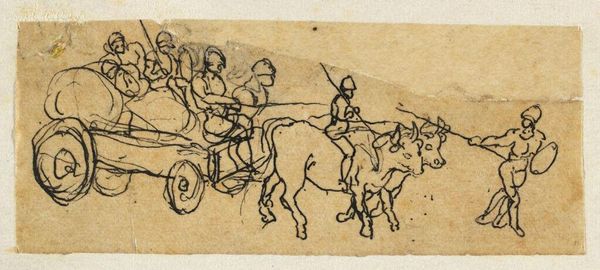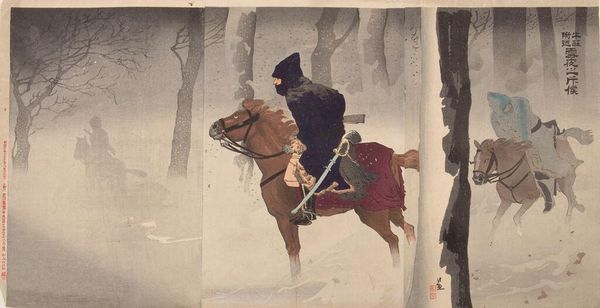
Copyright: Public Domain
Editor: This textile artwork, "Heroism on Land (Fire Engine)," is from somewhere between 1875 and 1900, and currently lives at The Art Institute of Chicago. It reminds me of a child’s storybook illustration. What stories do you see woven in here? Curator: Ah, yes, stories woven in thread and time! The fire engine itself, pulled by horses, carries potent symbols. Notice the uniformed figures – they're not merely firefighters, but emblems of civic duty, order, and, of course, courage. Consider, what did fire represent in the late 19th century? More than just destruction. Editor: Well, it was a huge threat to rapidly growing cities with wooden structures... Fire meant devastation. Curator: Precisely. So, this "Heroism on Land" depicts more than just putting out a blaze; it's a symbol of societal resilience against chaos, of humanity's will to rebuild. See how the landscape in the background—that almost dreamlike depiction of buildings—suggests the very thing they’re trying to save. Does the romantic landscape and narrative add emotional resonance? Editor: Absolutely! The weaving medium itself also contributes. I'd initially overlooked how interesting this technique is: it lends this sense of craft, maybe, adding a comforting element to the otherwise intense subject matter. Curator: The textile as a medium creates cultural memory. Woven threads holding scenes of both anxiety and aspiration… Do you agree that seeing heroism woven together as if it's literally held together with cultural cohesion enhances a viewing? Editor: Yes, absolutely. I now recognize it also reminds people of our interconnectedness in both crisis and creation. Thanks!
Comments
No comments
Be the first to comment and join the conversation on the ultimate creative platform.
